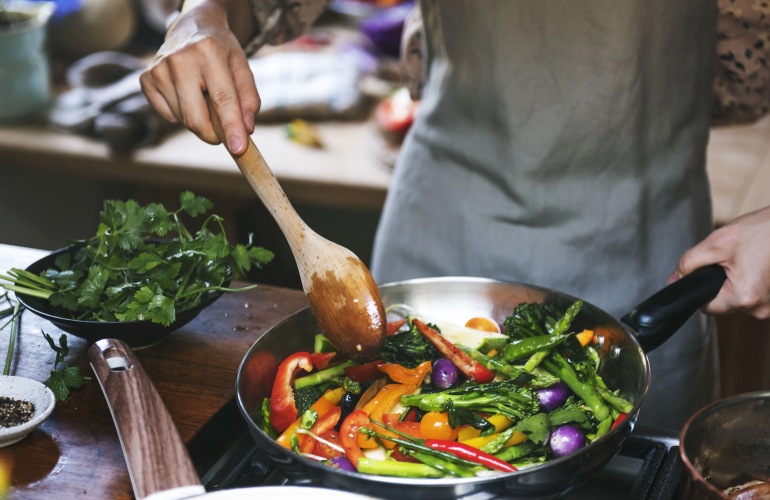We are what we eat. It’s as simple – and as complex – as that. A healthy diet is important at every stage of life, but exceptionally so as we advance in years. The good news is with a little common sense and creative cooking, we can support brain health, lower our cholesterol, and help maintain healthy blood sugar levels.
The older we get, the more our blood sugar can become problematic, warns the National Council for Aging, putting us at higher risk for elevated levels and potentially, Type 2 Diabetes.
Formerly known as non-insulin dependent or adult-onset, Type 2 Diabetes results from the body’s inability to efficiently use its insulin to keep blood sugar in check. A glucose conscious diet that limits certain carbs can go a long way toward keeping those levels stable and within safe parameters.
A smart eating plan considers your overall carbohydrate intake throughout the day. Check out this list of foods that lower blood sugar, while keeping your taste buds happy. Even small changes in your diet can make a big difference!
Vegetables Are Vital
Raw, cooked, or roasted, vegetables are just what the endocrinologist ordered. The American Diabetes Association recommends a minimum of 3-5 servings of non-starchy vegetables a day. They define a serving as half a cup of cooked and one cup of uncooked veggies. Low-carb choices like mushrooms, onions, eggplant, tomatoes, Brussel sprouts, zucchini, carrots, and baby corn add taste and texture to any meal. If you’re buying pre-packaged vegetables, pay attention to the preservatives to avoid unwanted extra added salt, sugar, fats, and oils.
What About Bread?
When it comes to breads, pumpernickel and 100% stone-ground whole wheat are the big winners. Less processed than other types of bread that can negatively impact blood sugar, pumpernickel and stone-ground whole wheat score lower on the glycemic index, making them a healthier choice.
Go Green
If you’re looking for a favorite color of food that will help lower blood sugar, put your money on green. Leafy greens come in a wide variety. Go with the tried and true romaine, or try arugula, kale, spinach, and chard for a change of pace. Add low-carb roasted veggies and your favorite protein, and you’ve got yourself a tasty and healthy feast. You can even throw some kale in the oven, add a little olive oil, and soon you’ll have delicious crunchy chips for snacking.
Berries are Berry Good for You
Studies have shown that people who consume whole fruits, specifically blueberries, grapes, and apples, had a significantly lower risk of developing Type 2 Diabetes. Packed with nutrients and fiber, one cup of berries has a total of only 15 carbs. Add them to your salad or save them for a late afternoon snack.
What are Legumes?
A legume, by definition, is a seed, pod, or other edible parts of a leguminous plant. You know them as foods like beans, peas, chickpeas, and lentils. When asking the question of how to reduce blood sugar levels, the answer should include these nutrient-rich plants. Legumes are complex carbohydrates that provide fiber as well as protein. Beware of canned legume products that have extra unwanted ingredients.
Sweet Potatoes are Sweet
Regular potatoes are out. But sweet potatoes and yams are in. Some research suggests the flesh of the sweet potato contains more fiber than the skin making the whole vegetable of benefit. Sweet potato fries are as yummy as regular fries. Your taste buds will be delighted.
Cold-Water Fish
Fish and meats do not contain carbohydrates, so they don’t contribute to blood sugar issues. However, according to studies, cold-water fish is a protein standout for actually helping to manage blood sugar levels.
A smart, carb-conscious diet is a massive step toward minimizing the risk of unhealthy blood sugar levels. Incorporate it into an active adult Overture lifestyle that includes plenty of regular exercise, unlimited opportunities for socializing, and chef taught gourmet cooking classes. Talk about a recipe for success!

